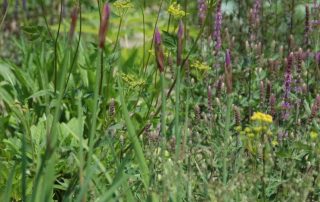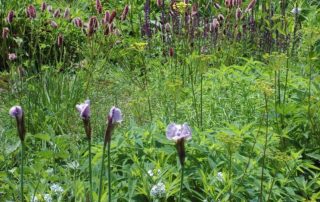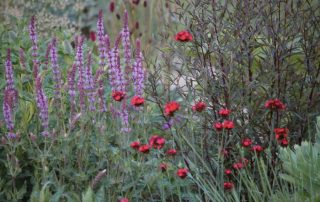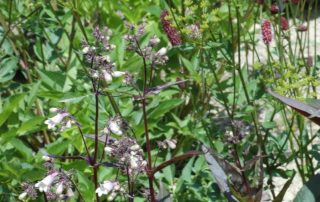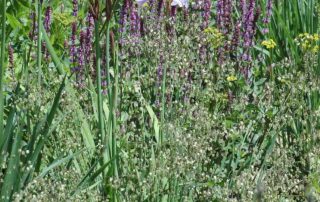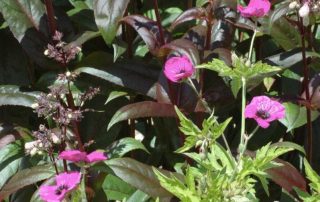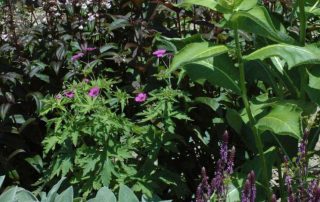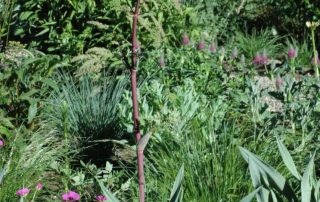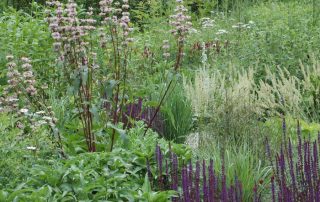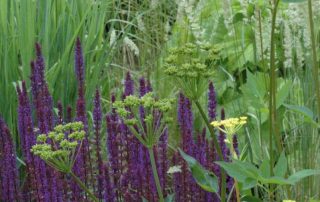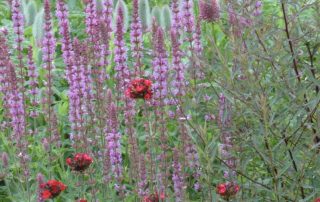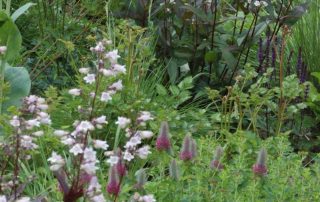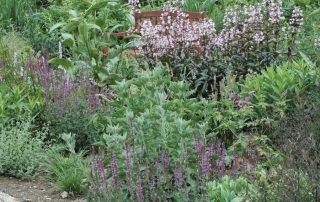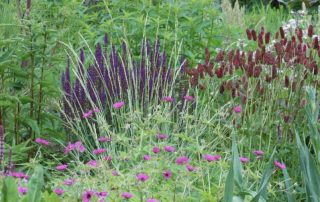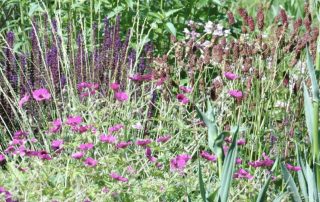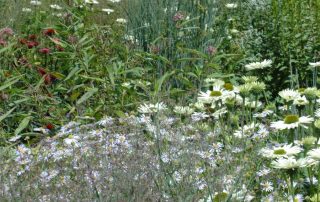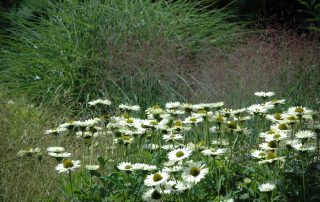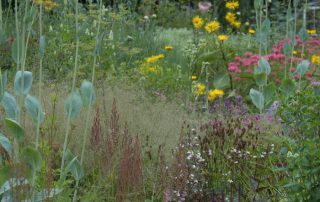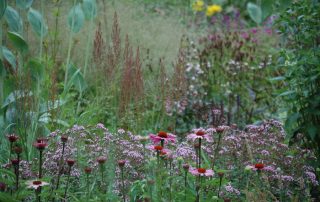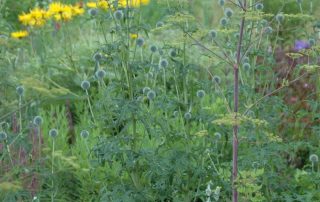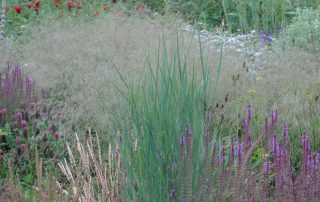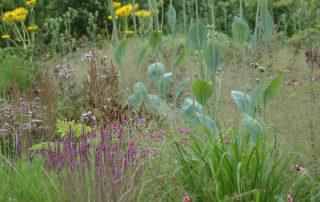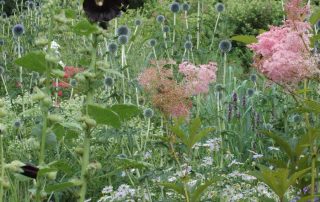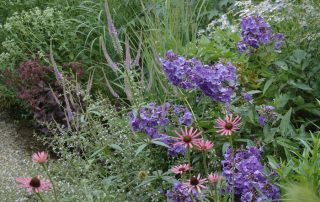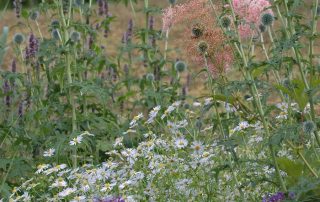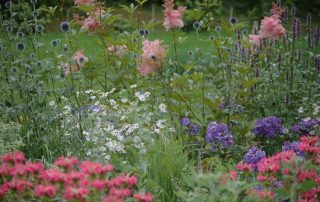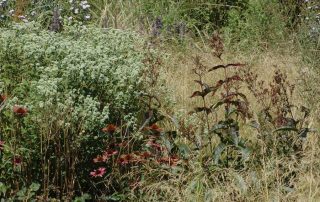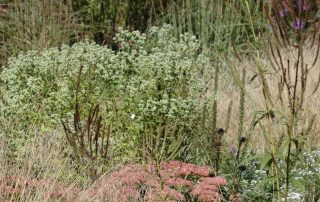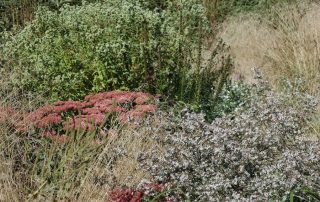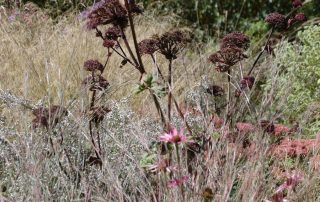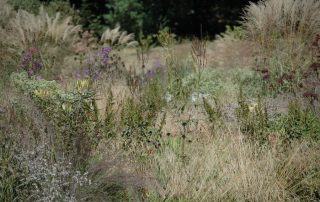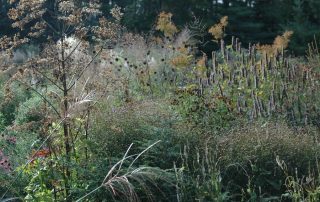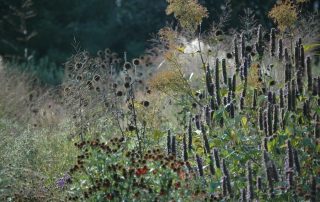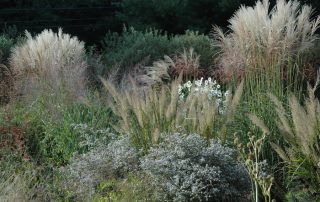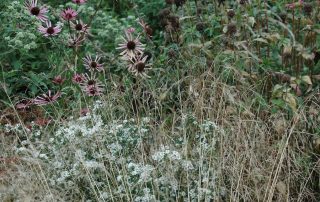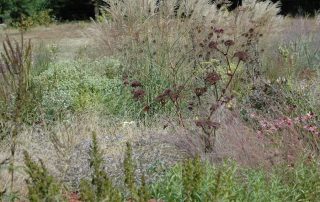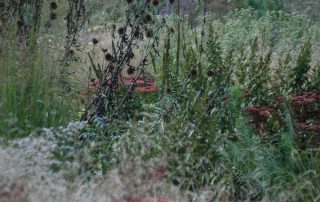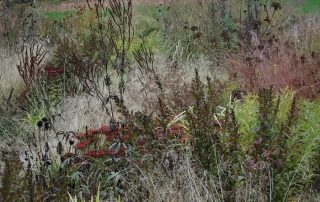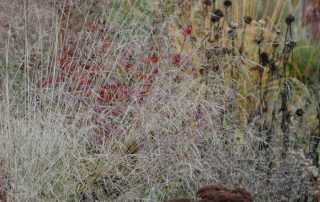Perennial Meadow
Here, a wide range of plants have been chosen with long-lasting and strongly contrasting forms to provide interest through the seasons. As the seasons advance, there is a distinct progression. In spring and early summer, only a handful of flowering plants have strong structures with an inflorescence that persists as an ornamental feature into the next flush of growth, as with our native umbellifer, Zizia aurea. What is particularly important at this time is the role played by many as yet to flower plants with their lush and contrasting colored foliage providing filler and bulk in a supporting role when flowers are few and far between. These include the gray-blue strap-like foliage of Eryngium yuccifolium and the deep red foliage of Penstemon ‘Husker’s Red’.
As the summer comes into full swing, the planting increases in height, and the display is increasingly dominated by plants of North American origin, such as Echinacea, Phlox, and Liatris. At least half of this planting consists of grasses of mixed origin – Sesleria, Deschampsia, Calamagrostis, and Panicum. With the arrival of fall, the very tallest plants, such as the gigantic ironweed, Vernonia, and Eupatorium, begin to flower and visually dominate the back of the planting. Eventually, bright colors are few and far between yet can seem even more enchanting, contrasting with the many earth tones of the persistent structural seed heads of earlier flowering plants and variations of yellow and red-colored fall foliage. As winter strengthens its grip, all that will remain are the skeletons of plants with a bit of colored foliage here and there. Many of these forms will remain intact until the first heavy snowfall.
What is most evident about this planting is that in places, the border is as deep as it is long, allowing for greater layering of plants. Furthermore, the depth of the planting area allows one to walk into the planting, thereby gaining a significantly different perspective as they progress along a designated path, the effect of which is considerably more intimate and inspiring than looking at the planting from the outside. Like all the display gardens, the composition of the Perennial Meadow is largely determined by the character of the soil, which in this case is clay loam. Culturally, this garden is dealt with similarly to the Deschampsia and Carex Meadows and for similar reasons. Before crashing down with the first heavy wet snow, the dead top growth of plants is incrementally chopped with shears and left lying as fertilizer and mulch at the base of the plant. Come spring, it is further incorporated with a mulching mower set high. Of equal importance is that this ‘mulch’ reduces the heaving of plants from frost, which is a particular issue with clay soils. When maintaining a garden in this way it becomes clear the added benefit of grasses with the copious amount of biomass they generate. On average, most broad-leaved plants (forbs) are nothing but stems come late fall. Grasses thus have a strong ecological appeal in sustaining the soil and the garden ecosystem that depends on it.


